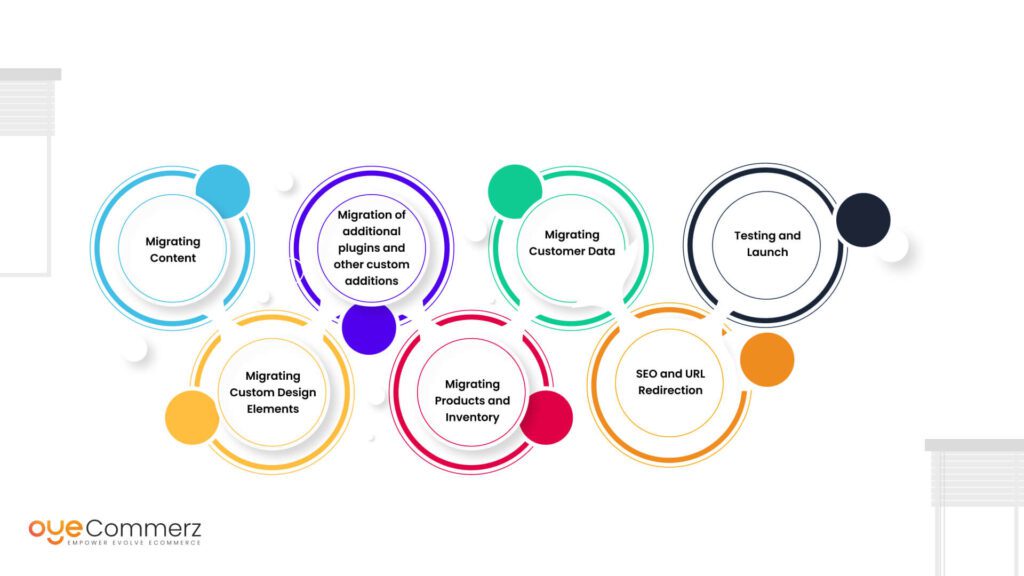In the constantly changing landscape of eCommerce, selecting the best platform is vital for your company’s prosperity. If you’re at the moment using WordPress and considering a migration to an alternative, you’re not the only one. Many businesses are shifting to take advantage of Shopify’s comprehensive tools, user-friendliness, and growth potential. This guide will walk you through the process of migrating from WP to Shopify seamlessly, guaranteeing that you realize your eCommerce potential.
Why Transition from WordPress to Shopify?
Prior to exploring the migration process, it’s crucial to realize why this transition can be beneficial for your eCommerce business:
Intuitive Design: Shopify features an intuitive interface that makes easier store management, allowing for non-technical users.
Flexibility: As your company develops, Shopify can support higher visitors and sales without sacrificing performance.
Built-in Tools: Shopify comes with pre-installed features for SEO, analytics, payment handling, and more, minimizing the need for multiple plugins.
Robust Protection: With Shopify, you get access to strong security protocols that protect critical customer details.
Steps for a Smooth Migration
Migrating your digital shop from WP to Shopify involves key phases.
Here’s the way to achieve a hassle-free transition:
Plan Your Migration Strategy
Start by drafting your migration strategy. Pinpoint which elements of your current site you want to move, such as:
Item details
Client data
Transaction records
Posts
Pick the Appropriate Migration Option
Based on your requirements, select a migration package that aligns with your business. OyeCommerz delivers multiple plans:
Basic Migration Package: Suitable for small stores with limited products.
Standard Migration Package: Recommended for mid-range businesses with moderate requirements.
Comprehensive Solution: Excellent for larger stores requiring custom customization.
Save Your Information
Before beginning the migration, make sure that you have a complete copy of your WordPress site. This task is crucial in case anything goes awry during the move.
Export Your Content from WordPress
Utilize tools or custom scripts to extract essential data from your WordPress site:
Inventory
Users
Sales records
Content pieces
Upload Information into Shopify
After you have your information Shopify shipping configurations retrieved, utilize Shopify’s import tools or external apps to migrate your information into your new store. Verify that all data is properly structured and arranged.
Customize Your Shopify Platform
After uploading data, adjust your Shopify platform’s design to align with benefits of Shopify over WordPress your brand identity. Think about working with a designer if you require complex customization.
Set Up Checkout Systems and Logistics
Set up payment gateways and shipping settings in Shopify to facilitate a user-friendly checkout experience for customers.
Apply SEO Best Practices
To keep your search engine rankings during the migration:
Set up 301 link updates from existing URLs to new ones.
Revise metadata.
Optimize images and copy for better ranking.
Test Your Updated Shop
Before going live, thoroughly check your Shopify site. Look out for any discrepancies, payment processing issues, or incomplete files.
Launch Your Platform
After everything is in place, it’s time to go live! Share the change to your customers and encourage them to discover the enhanced offerings of your Shopify store.
Post-Migration Support
Following publishing your updated store, regular help is important. Think about partnering with service providers who can help with:
Troubleshooting
Promotional campaigns
Performance optimization
Conclusion
Migrating from WordPress to Shopify can be a game-changing step for your eCommerce. By following this guide and utilizing tools like those offered by OyeCommerz, you can ensure a seamless transition that improves your business potential. Adapt to the change and discover the potential of Shopify today!
